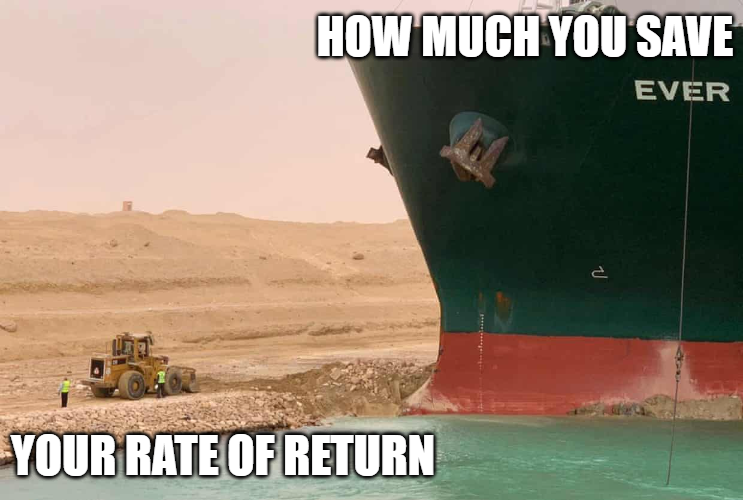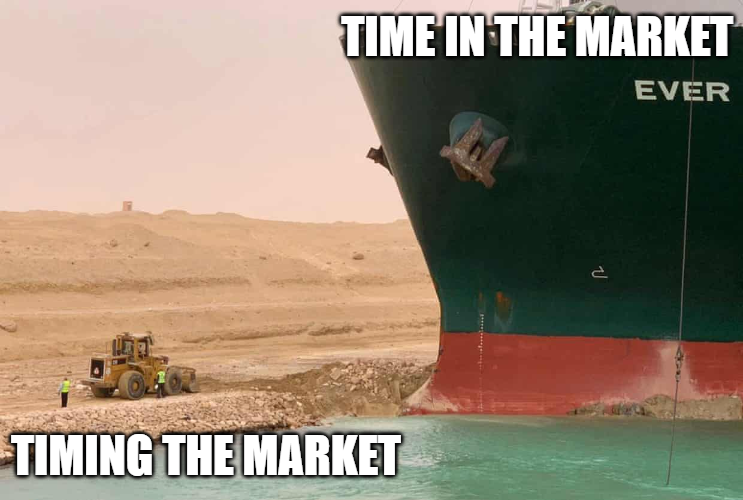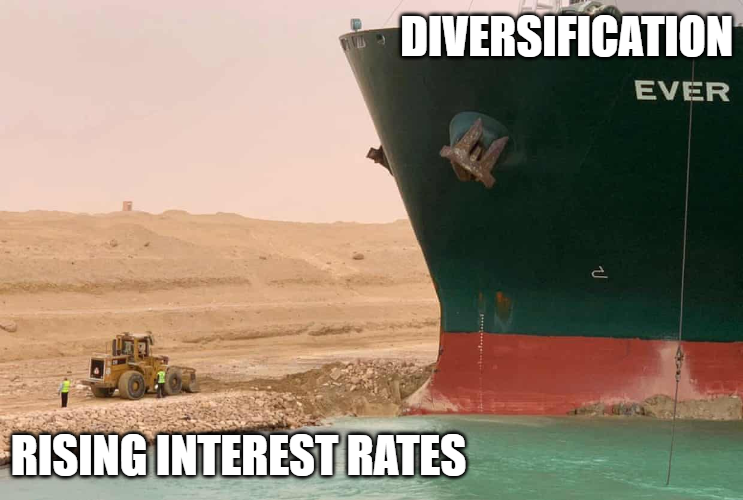No, I’m not talking about another hedge fund blowing up or a Reddit crowd swarming to penny stocks; I’m talking about a boat. Of course, not just any boat, a big boat, the size of the empire state building, carrying everything from live animals to furniture and coffee.
Two weeks ago, you probably had never heard about this boat, but now, everyone knows it. It got stuck. Stuck in a very inconvenient place. Fifty billion dollars’ worth of inconvenience, which is about 400 million dollars an hour.
If you have no clue what I am talking about, let me catch you up to speed. The second-largest water vessel in the world, the Ever Given, carrying 20,000 containers, ran ashore in the middle of the Suez Canal, Egypt, on March 24th. In doing so, it blocked one of the busiest trade routes during an already stressed supply chain. As soon as the trade route stopped, time was lost by hundreds of other boats. How much time? About 50 billion dollars’ worth.
They tried to dig the boat out with an excavator and a bulldozer for the first few days.
Narrator: *whispers* “it wasn’t enough.”
The initial effort was so futile that it sparked a viral phenomenon worldwide, where the image above was used as a meme to express people’s very own hilarious size and scale issues.
Here is the meme format: a big thing that matters (boat) vs. the thing that we try and distract ourselves with that really isn’t making progress (bulldozer).
True enough, there are a lot of financial lessons we can take away from the Suez Canal fiasco using this meme. And so, I thought we could review them together.
For those in the wealth accumulation phase (i.e., saving for retirement), here are some important lessons:
How much you save is more important than your rate of return.
In the last year, I have heard an untold amount of people tell me how they are up 50%+ in their day trading account. That’s great, but statistically speaking, your expected future returns are now much lower (think about a bell curve). Also, these stats are usually from people who have very little skin in the game and are trading small accounts. I would rather have 5% of one million dollars than 50% of ten thousand dollars. A prudent saver can add 50% to a $10k account in a year and with a lot less stress too. Without savings, the rate of return means very little.
Time in the market is more important than timing the market.
Sell high and buy low; how hard could it be? Well, over the long run, really hard, and there is a lot of survivorship bias in this arena. Even Warren Buffet said most people will do better with a low-cost index fund. Does that mean that you should not own certain stocks that you like? No, it just means that your core strategy should give you the highest probability of success based on historical data. For example, on a 20-year basis, annualized total returns for the S&P 500 range from 3.1% to 17.9%. However, one-year returns are much different. You could lose or gain 50% in one year. Taking a long-term approach is a much better strategy for compounding returns during the wealth accumulation phase of life. Another way of saying this is that long-term returns are much more important than short-term volatility.
For those in the wealth decumulation phase (i.e., retirement), here are some important lessons:
Your financial plan is more important than your rate of return.
You’ve worked your entire life to create enough wealth to retire on your own terms, jeopardizing that chasing a few extra points of return is not a prudent decision. The purpose of the financial plan is to clearly communicate what you need to achieve a life well-lived. The purpose of the asset allocation is to provide the highest probability of you achieving that goal. Therefore, if you have to take some upside off the table to reduce the amount of risk in your portfolio, so be it. Who cares what the latest hot stock is doing? You matter much more.
Portfolio diversification (risk management) is more important than rising interest rates.
Rising interest rates are a hot topic right now. They are impacting valuations, the housing market, inflation expectations, etc. Without boring you with detailed information about the reality of fixed income behavior (bonds are boring), the most important thing to remember is that the bond funds in your portfolio are primarily there to help you reduce risk when the risky stuff starts acting up. If you are looking at treasuries hoping for yield, you are in the wrong place. Should we discuss getting more tactical with your bond duration if we are truly moving into an inflationary cycle? Absolutely, but it should be based on how the bond side of your portfolio is offsetting the very real threat of the risky assets (stocks) getting very risky, very quickly.
For those who really like to get involved in the asset management process, I made a few more for you, but instead of making memes out of them, here they are in statement form:
Position sizing is more important than what you’re holding.
Risk management is more important than leverage.
Your exit strategy is more important than the returns you’ve already made.
Compounding returns are more important than linear returns.
A strategy’s value add is more important than its value proposition.
Memes aside, the biggest takeaway I had from the Ever Given/Suez Canal debacle is that when you get stuck, whether in life or with a really big boat, ask for help (professional help, specifically). It is the most effective way to get back on track.
If that’s you, we’d love to talk. You can learn about how we serve financial advisors through our introduction video.
Happy investing!






